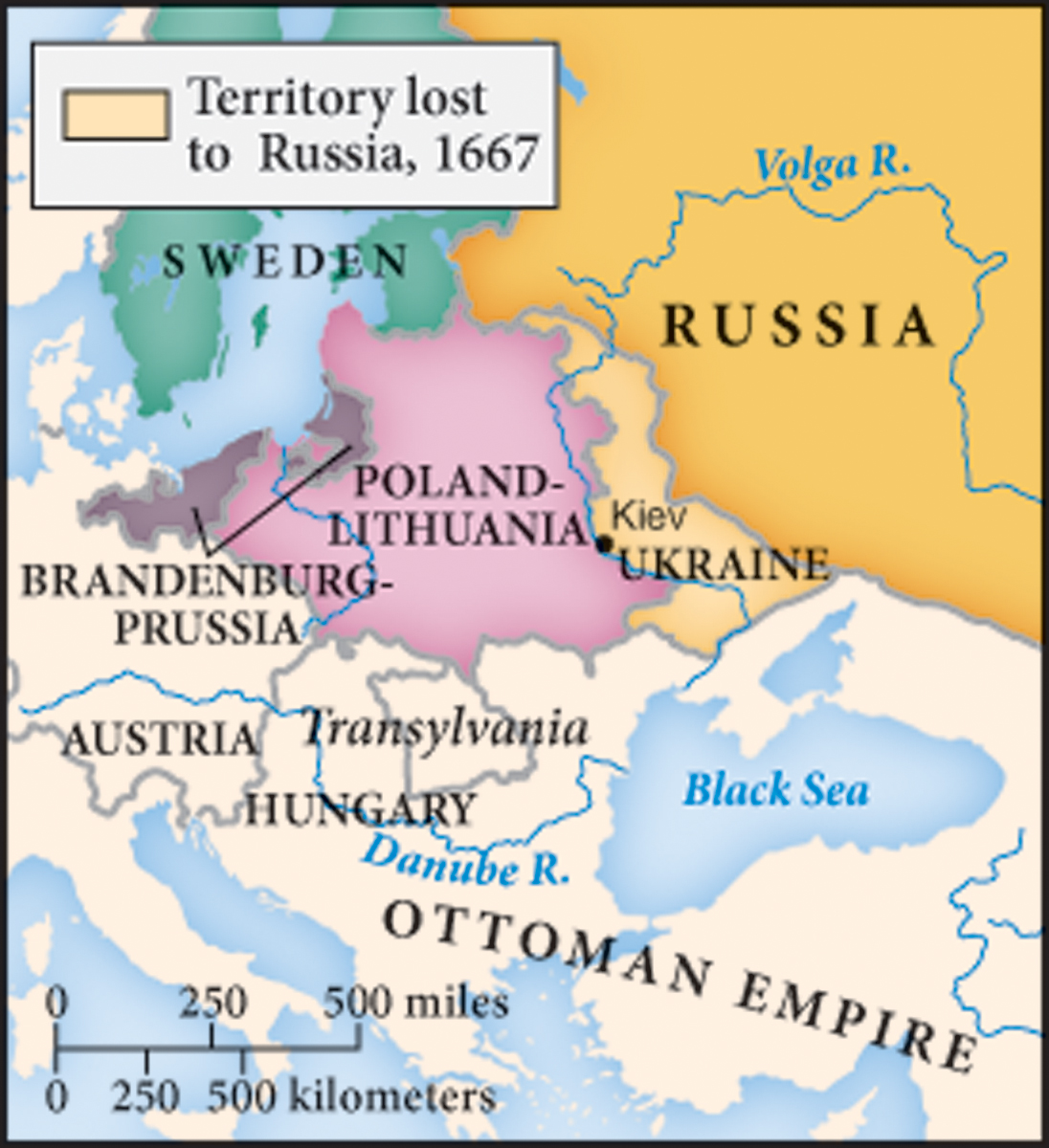Poland-Lithuania Overwhelmed
Printed Page 525
Important EventsPoland-Lithuania Overwhelmed
In the version of constitutionalism adopted in Poland-Lithuania, the great nobles dominated the Sejm (parliament). To maintain an equilibrium among themselves, these nobles each wielded an absolute veto power. This “free veto” constitutional system deadlocked parliamentary government. The monarchy lost its room to maneuver and, with it, much of its remaining power.

Ukrainian Cossack warriors revolted against the king of Poland-Lithuania in 1648, inaugurating two decades of tumult known as the Deluge. Cossack was the name given to runaway serfs and poor nobles who formed outlaw bands in the no-man’s-land of southern Russia and Ukraine. In 1654, the Cossacks offered Ukraine to Russian rule, provoking a Russo-Polish war that ended in 1667 when the tsar annexed eastern Ukraine and Kiev.
Many towns were destroyed in the fighting, and as much as a third of the Polish population perished. The once prosperous Jewish and Protestant minorities suffered greatly: some fifty-six thousand Jews were killed by the Cossacks, the Polish peasants, or the Russian troops. Surviving Jews moved from towns to shtetls (Jewish villages), where they took up petty trading, moneylending, tax gathering, and tavern leasing—activities that fanned peasant anti-Semitism. Desperate for protection amid the war, most Polish Protestants backed the violently anti-Catholic Swedes, who tried to intervene militarily, and the victorious Catholic majority branded the Protestants as traitors. In Poland-Lithuania people came to assume that a good Pole was a Catholic. The commonwealth had ceased to be an outpost of toleration.
The commonwealth revived briefly when a man of ability and ambition, Jan Sobieski (r. 1674–1696), was elected king. Sobieski gained a reputation throughout Europe when he led twenty-five thousand Polish cavalrymen into battle in the siege of Vienna in 1683. His cavalry helped rout the Turks and turned the tide against the Ottomans. Despite his efforts to rebuild the monarchy, Sobieski could not halt Poland-Lithuania’s decline into powerlessness. The Polish version of constitutionalism fatally weakened the state and made it prey to neighboring powers.